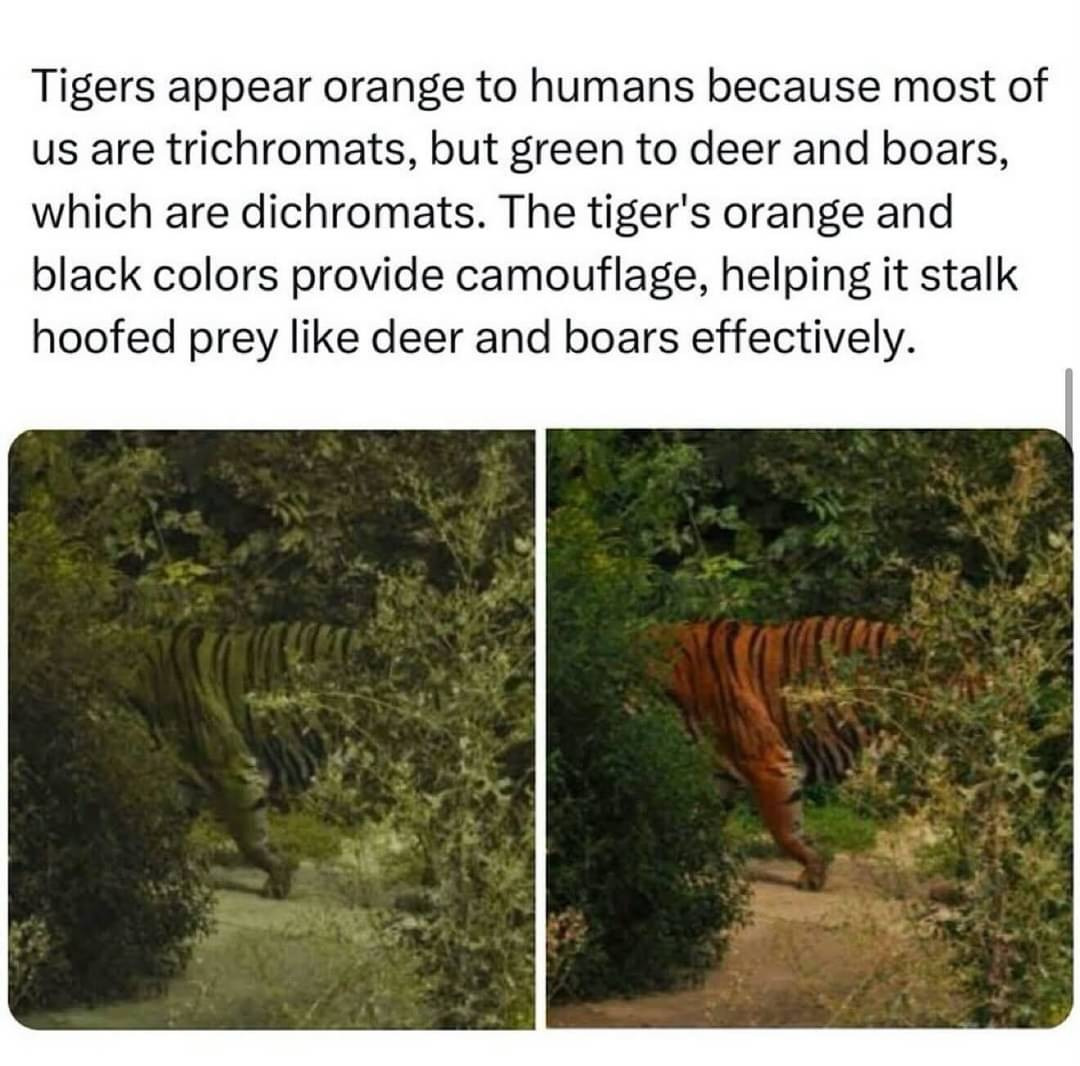this post was submitted on 11 Apr 2025
1106 points (99.6% liked)
Science Memes
15484 readers
3256 users here now
Welcome to c/science_memes @ Mander.xyz!
A place for majestic STEMLORD peacocking, as well as memes about the realities of working in a lab.

Rules
- Don't throw mud. Behave like an intellectual and remember the human.
- Keep it rooted (on topic).
- No spam.
- Infographics welcome, get schooled.
This is a science community. We use the Dawkins definition of meme.
Research Committee
Other Mander Communities
Science and Research
Biology and Life Sciences
- !abiogenesis@mander.xyz
- !animal-behavior@mander.xyz
- !anthropology@mander.xyz
- !arachnology@mander.xyz
- !balconygardening@slrpnk.net
- !biodiversity@mander.xyz
- !biology@mander.xyz
- !biophysics@mander.xyz
- !botany@mander.xyz
- !ecology@mander.xyz
- !entomology@mander.xyz
- !fermentation@mander.xyz
- !herpetology@mander.xyz
- !houseplants@mander.xyz
- !medicine@mander.xyz
- !microscopy@mander.xyz
- !mycology@mander.xyz
- !nudibranchs@mander.xyz
- !nutrition@mander.xyz
- !palaeoecology@mander.xyz
- !palaeontology@mander.xyz
- !photosynthesis@mander.xyz
- !plantid@mander.xyz
- !plants@mander.xyz
- !reptiles and amphibians@mander.xyz
Physical Sciences
- !astronomy@mander.xyz
- !chemistry@mander.xyz
- !earthscience@mander.xyz
- !geography@mander.xyz
- !geospatial@mander.xyz
- !nuclear@mander.xyz
- !physics@mander.xyz
- !quantum-computing@mander.xyz
- !spectroscopy@mander.xyz
Humanities and Social Sciences
Practical and Applied Sciences
- !exercise-and sports-science@mander.xyz
- !gardening@mander.xyz
- !self sufficiency@mander.xyz
- !soilscience@slrpnk.net
- !terrariums@mander.xyz
- !timelapse@mander.xyz
Memes
Miscellaneous
founded 2 years ago
MODERATORS
you are viewing a single comment's thread
view the rest of the comments
view the rest of the comments

So was it just random that their fur is orange and not green? As both would help hunt prey just as well. Or is the advantage of being orange, that it wards away other tigers and predators that might otherwise muscle into its territory and create conflict.
It’s also orange because mammals can’t produce green pigments, so orange is the next best thing if your prey is red-green colorblind.
Our primary outer protein is basically keratin, which can be tinted orange(carotene), beige (collagen) or brown/black (melanin).
The green pigment is a byproduct of bilirubin catabolism, which we don't have because we use a different pathway to metabolize and recycle it.
Found the tiger.
Good eyesight!
Not particularly, just doesn't have hooves.
the green pigment? What green pigment?
For reptiles and other stuff, we don't have those.
more accurately, orange pigments are readily available. Nothing fundamentally stops mammals (or anything else) from developing a green. Note for example many animals have green eyes.
From what I understand green eyes are a bit weird as far as coloration goes, as they look green due to the way light is interacting with small amounts of melanin in the iris (the same pigment that makes eyes brown) rather than due to green pigment. I’m not sure that could be replicated in fur vs in a liquid environment like with the eye.
Birds mimic green colored pigments with iridescence (except turacos, they have green pigments for real) in their feathers, but I’m not sure that’s something mammals can do structurally in fur the way birds can in feathers.
Both blue and green eyes in humans and blues and many greens in vertebrates are structural, yeah. Yes the structural coloring could be recreated in fur or skin. (noting that many mammals do structural IR effects in their fur, famously polar bears)
I wish I could find the sources from when I was reading about this months ago, it was more about evolution in terms of things that can happen and not ‘random’ mutations, and one of the examples was tigers with orange fur instead of green. It’s not physically impossible to have structural coloring (although the fact there are no green mammals suggests a strong inhibition somewhere along the line), but you first have to have the genetic and molecular groundwork laid to allow it to happen. Ex: it’s not physically impossible for animals to manufacture their own vitamin C, but humans just can’t do it because we don’t have the necessary molecular pathways other animals use. I hope that makes sense for what I’m trying to get at.
... So how do green eyes work?
Addressed this previously here: https://lemmy.blahaj.zone/comment/13887364
Awesome thanks!
Neat to learn mammals are normally green due to genetic structures.
So green hair and fur could never happen naturally.
The color of your eyes doesn't have anything to do with the cones and rods that pick up the light reflected off of objects.
I mean the pigment of the iris.
This is probably an example of natural evolution/selection where tigers that had slowly evolved more orange in their fur naturally, were able to feed more. This in turn meant the orange triat in their genes was passed on more frequently and became more dominant in the population.
In a sense it was probably a "random" mutation, but when it became useful and effective it was passed down quicker.
This is how evolution works. People often imagine some sort of logical system to it, but it really is just random mutations all over, with the advantageous ones propagating. There were probably a bunch of tigers with various odd colors or patterns at some point due to random mutations, but those evidently were less useful for hunting and reproducing than how they look now, so they died out in competition with the known variants.
Ya so we wouldn’t expect everything to be optimized or all “features” (traits) to be useful right?
But deer vision is immutable god creation. Checkmate.
Maybe the orange color happened to coincide with the patterns that worked best. Had their prey been able to see the orange tint it would have worked against the tiger, but since they can't it was allowed to flourish with that pattern. If true at all, it's a bit of a dead end since a mutation for the prey to begin seeing orange means tigers have narrowed into that pattern dependent on the color.
Are there any green animals that aren't reptiles, birds or insects? That might be a clue.
Could probably come up with a few fishes, but no mammals come to mind
Sloths can be green if I recall correctly, they have a special clear type of hair that can grow moss or algea on, or in it or something
They can appear green because of the plant growth, but don’t produce the green color themselves.
Yellows and browns and orange are a lot more related, and whatever color the pre-orange tiger ancestor was, it was almost certainly one of those.
Natural variation in the coat means some of those tigers were more orange than their peers. This trait was selected for.
Probably both, except within the bounds of easily 'random' bounds. Supposing it were possible for a mammal to be green, it wouldn't matter of green were 'better', unless it happened at the right time. Orange could have won out simply because it was good enough to do one thing (camoflauge for pretty) and didn't have enough downside to message that benefit (high visibility to hunters or less valuable prey). Heck, a gene that turned a lion invisible could have turned up and it wouldn't be guaranteed to carry forward even if it didn't have any downsides if the random recipient also happened to be clumsy or unlucky and died of some random injury or disease.
Evolution doesn't really have any tools that aren't random, at least until intelligence came around to provide other 'non natural' paths, though of course those are just as natural as the others, just that we think we're special and above nature.
Recall that evolution isn't intelligent. Random mutations do random shit until one is accidentally successful. Random orange that appears green falls right into that scheme 😅
It feels like we were denied the stunning possibility of green tigers... until you stop and remember the stunning reality of them being bright fucking orange.